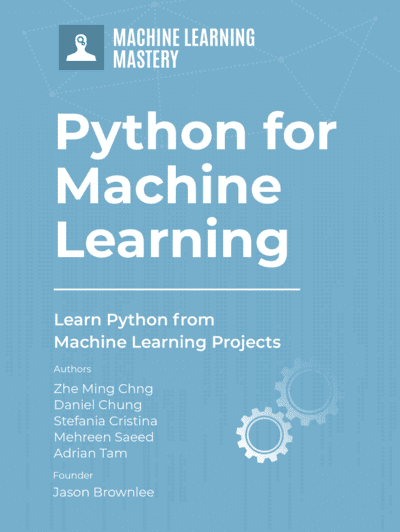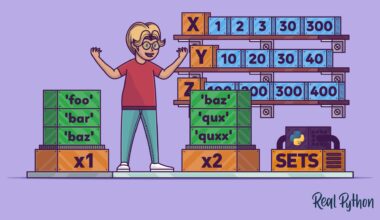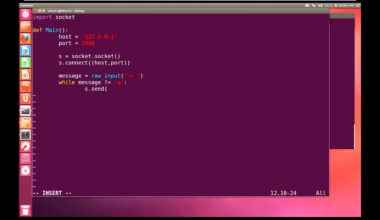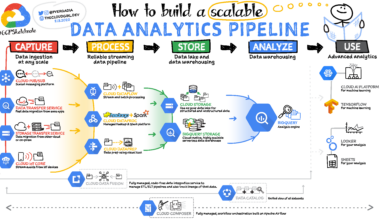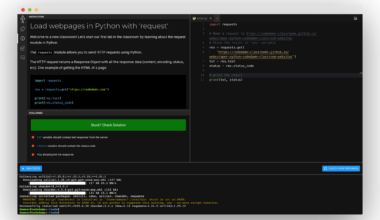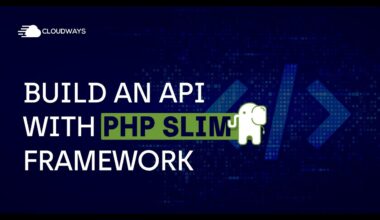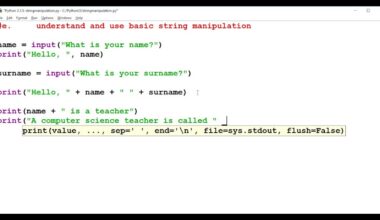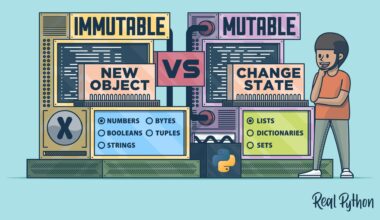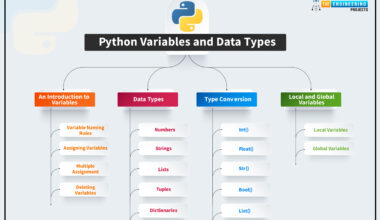Introduction to Python for Machine Learning
As the field of machine learning continues to grow, the importance of having a reliable programming language cannot be overstated. Python stands out as one of the most popular languages in the field of machine learning due to its simplicity, flexibility, and vast collection of libraries. Python is an open-source, high-level programming language that can be used for a variety of applications, including web development, data analysis, and machine learning.
Machine learning involves the use of algorithms to analyze data, learn from it, and improve upon its performance over time. Python is the ideal programming language for machine learning as it offers a wide range of libraries that are specifically designed for machine learning tasks. These libraries provide a rich set of tools that make it easier for data scientists and machine learning engineers to build and deploy machine learning models.
Python has a gentle learning curve, making it easy for beginners to pick up and start using for machine learning. Its syntax is simple and easy to understand, and it has a wide range of built-in functions that are useful for data manipulation and analysis. Python also supports object-oriented programming, which makes it easier to organize and structure complex machine learning projects.
One of the key strengths of Python is its vast collection of libraries and frameworks. These libraries provide a wide range of tools for machine learning, including data preprocessing, feature engineering, and model building. Some of the most popular libraries for machine learning in Python include NumPy, Pandas, Matplotlib, Scikit-learn, and TensorFlow.
In conclusion, Python is a powerful tool for machine learning that offers a wide range of libraries and tools for data analysis, preprocessing, and model building. Its simple syntax, object-oriented programming support, and vast collection of libraries make it an ideal choice for data scientists and machine learning engineers. With Python, you can easily build and deploy machine learning models that can help solve complex problems and improve business operations.
Understanding the Basics of Python Programming Language
Python is a high-level programming language that is interpreted, dynamically-typed, and object-oriented. It was designed to be easy to read and write, making it a popular choice for beginners and experts alike. In this section, we will cover some of the key features of Python that make it an ideal language for machine learning.
Variables and Data Types
Variables are used to store values in Python. Unlike other programming languages, Python is dynamically typed, which means that the data type of a variable is inferred at runtime. This makes Python very flexible and easy to use. Some of the most common data types in Python include integers, floats, strings, and booleans.
# Example of variable declaration and initialization x = 10 y = 2.5 name = "John" is_valid = True
Control Flow Statements
Python provides a variety of control flow statements that allow you to execute code based on certain conditions. The most common control flow statements in Python include if/else statements, for loops, and while loops. These statements make it easy to write code that can handle complex tasks.
# Example of if/else statement
if x > 5:
print("x is greater than 5")
else:
print("x is less than or equal to 5")
# Example of for loop
for i in range(5):
print(i)
# Example of while loop
i = 0
while i < 5:
print(i)
i += 1
Functions and Modules
Functions are reusable blocks of code that perform a specific task. Python provides a wide range of built-in functions, as well as the ability to create your own functions. Modules are collections of functions and other code that can be imported into your program. Python has a vast collection of modules that are specifically designed for machine learning.
# Example of function definition
def add_numbers(x, y):
return x + y
# Example of module import
import numpy as np
Object-Oriented Programming
Python supports object-oriented programming, which allows you to organize your code into objects that can interact with each other. This makes it easier to manage complex machine learning projects and reuse code.
# Example of class definition
Python Libraries for Machine Learning
Python is a versatile programming language that can be used for a variety of applications, including machine learning. One of the key strengths of Python is its vast collection of libraries that are specifically designed for machine learning tasks. These libraries provide a wide range of tools for data preprocessing, feature engineering, model building, and evaluation.
NumPy
NumPy is a popular library for numerical computing in Python. It provides a wide range of mathematical functions and tools for working with multi-dimensional arrays. NumPy arrays are used extensively in machine learning for storing and manipulating data. Some of the key features of NumPy include array broadcasting, indexing, and slicing. NumPy is a fundamental library for many other machine learning libraries in Python.
Pandas
Pandas is a powerful library for data manipulation and analysis. It provides a wide range of tools for importing, cleaning, and transforming data. Pandas is widely used in machine learning for data preprocessing and feature engineering tasks. Some of the key features of Pandas include data indexing, merging, and reshaping. Pandas dataframes are used extensively in machine learning for storing and manipulating data.
Matplotlib
Matplotlib is a popular library for data visualization in Python. It provides a wide range of tools for creating charts, graphs, and other visualizations. Matplotlib is often used in machine learning for visualizing data and model results. Some of the key features of Matplotlib include line plots, scatter plots, and histograms.
Scikit-learn
Scikit-learn is a popular machine learning library in Python. It provides a wide range of tools for building and evaluating machine learning models. Scikit-learn includes many popular machine learning algorithms, including linear regression, logistic regression, decision trees, and support vector machines. Scikit-learn also provides tools for data preprocessing, feature engineering, and model selection.
TensorFlow
TensorFlow is a popular library for building and training machine learning models. It provides a wide range of tools for building neural networks and other deep learning models. TensorFlow is often used in machine learning for natural language processing, image recognition, and other complex tasks. TensorFlow also provides tools for data preprocessing and model evaluation.
In conclusion, Python libraries provide a wide range of tools for machine learning tasks. Libraries like NumPy, Pandas, Matplotlib
Data Preprocessing and Feature Engineering with Python
Data preprocessing and feature engineering are critical steps in the machine learning process. These steps involve cleaning and transforming raw data into a format that can be used to train machine learning models. Python provides a wide range of libraries and tools for data preprocessing and feature engineering.
Data Preprocessing
Data preprocessing involves cleaning and transforming raw data to prepare it for machine learning. Some of the common techniques used in data preprocessing include:
-
Data Cleaning:
This involves filling in missing values, removing duplicates, and correcting inconsistencies in the data. -
Data Transformation:
This involves scaling, normalizing, or encoding the data so that it can be used by machine learning algorithms. -
Feature Selection:
This involves selecting the most relevant features from the dataset.
Python provides a wide range of libraries for data preprocessing, including Pandas and NumPy.
Feature Engineering
Feature engineering involves creating new features from existing data to improve the accuracy of machine learning models. Some of the common techniques used in feature engineering include:
-
Feature Extraction:
This involves extracting features from raw data, such as text or images. -
Feature Scaling:
This involves scaling features to ensure that they are on the same scale. -
Feature Encoding:
This involves encoding categorical data so that it can be used by machine learning algorithms.
Python provides a wide range of libraries for feature engineering, including Scikit-learn and TensorFlow.
Example of Data Preprocessing and Feature Engineering in Python
Let’s say we have a dataset of customer transactions and we want to build a machine learning model to predict customer churn. The dataset contains the following features: customer_id, transaction_date, transaction_amount, and churn_status.
We can use Python libraries like Pandas and Scikit-learn for data preprocessing and feature engineering. Here’s an example of how we can preprocess and engineer features from the dataset:
import pandas as pd
from sklearn.preprocessing import StandardScaler
from sklearn.feature_selection import SelectKBest
from sklearn.feature_selection import chi2
# Load dataset
data = pd.read_csv('customer_transactions.csv')
# Drop unnecessary columns
data = data.drop
Building Machine Learning Models with Python
After understanding the basics of Python and exploring the available libraries, it’s time to build machine learning models using Python. Python has a wide range of libraries and frameworks that make it easy to build and train machine learning models. In this section, we will explore some of the popular libraries and methods used for building machine learning models using Python.
Supervised Learning
Supervised learning is a type of machine learning where the algorithm is trained on labeled data. The goal is to predict the output for new input data based on the patterns learned from the labeled data. Some of the popular supervised learning algorithms in Python include:
-
Linear Regression:
This algorithm is used for predicting continuous values and is widely used in fields like finance and economics. -
Logistic Regression:
This algorithm is used for predicting binary outcomes and is widely used in fields like marketing and healthcare. -
Decision Trees:
This algorithm is used for both classification and regression tasks and is widely used in fields like finance and healthcare. -
Random Forests:
This algorithm is used for both classification and regression tasks and is widely used in fields like finance and marketing. -
Support Vector Machines (SVM):
This algorithm is used for both classification and regression tasks and is widely used in fields like image and text recognition.
Python provides a wide range of libraries and frameworks for implementing these algorithms, including Scikit-learn and TensorFlow.
Unsupervised Learning
Unsupervised learning is a type of machine learning where the algorithm is trained on unlabeled data. The goal is to discover hidden patterns and structures in the data. Some of the popular unsupervised learning algorithms in Python include:
-
Clustering:
This algorithm is used for grouping similar data points together and is widely used in fields like customer segmentation and data mining. -
Principal Component Analysis (PCA):
This algorithm is used for reducing the dimension
Final Thought: Python for Machine Learning – A Must-Have Tool for Data Scientists and Machine Learning Engineers
Python has become a ubiquitous language in the field of machine learning due to its simplicity, flexibility, and vast collection of libraries. Python libraries like NumPy, Pandas, Matplotlib, Scikit-learn, and TensorFlow provide a rich set of tools that make it easier for data scientists and machine learning engineers to build and deploy machine learning models.
Python’s gentle learning curve, simple syntax, and object-oriented programming support make it easy for beginners to pick up and start using for machine learning tasks. Its vast collection of libraries and frameworks provide a wide range of tools for data preprocessing, feature engineering, model building, and evaluation.
Python is also widely used in both supervised and unsupervised learning. For supervised learning, popular algorithms like Linear Regression, Logistic Regression, Decision Trees, Random Forests, and SVM can be implemented using libraries like Scikit-learn and TensorFlow. For unsupervised learning, clustering algorithms like K-Means and hierarchical clustering can be implemented using Scikit-learn and other libraries.
In conclusion, Python is a must-have tool for data scientists and machine learning engineers due to its simplicity, flexibility, and vast collection of libraries. Its ability to handle complex machine learning projects, combined with its gentle learning curve, make it a popular choice for both beginners and experts. With Python, you can easily build and deploy machine learning models that can help solve complex problems and improve business operations.
